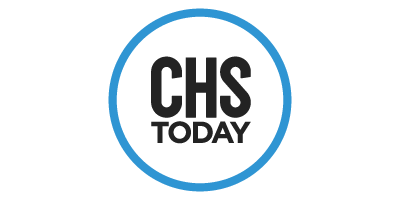Mind the (wage) gap.
DYK that today is Equal Pay Day? This national day, which symbolizes how far into the year women must work to earn what men earned in the previous year, originated in 1996 by the National Committee on Pay Equity, in order to bring awareness to the pay gap. (So, Equal Pay Day is on April 10 this year, marking the 99 days from the start of the year that a woman must work to make what a typical man would have made by the end of 2017– this date, however, changes based on race + if you have children).
Yesterday, the National Partnership for Women & Families, a nonpartisan, nonprofit organization, released their annual report based on U.S. Census Data, which found that median annual pay for a woman who holds a full-time, year-round job is $41,554, while the median annual pay for a man who holds a full-time, year-round job is $51,640. This means that, overall, women in the United States are paid 80 cents for every dollar paid to men– amounting to an annual gender wage gap of $10,086.
According to the U.S. Joint Economic Committee, the U.S. economy is $2 trillion bigger today than it would have been if women had not increased their presence in the workforce over the past 30 years. And while there are major gains being made towards gender equality, the Institute for Women’s Policy Research found that based on current rate of change, the gap will not close until 2059, (even later for women of color).
Oftentimes, this wage gap is explained as result of women choosing careers in lower-paid, female-dominated industries. However, according to the Economic Policy Institute, “these ‘choices’ stem from a lifetime of decisions shaped by economic and social forces.”
So what are women earning on a state, + local scale?
State
$10 billion: The amount that South Carolina women, who are employed full-time, have the potential to earn by closing the wage gap.
In comparison to full-time working white men, the following races of full-time working women make the below (data from the WREN annual summit):
- White women: 74 cents on the dollar
- Latino women: 54 cents on the dollar
- African American women: 53 cents on the dollar
$11,000: The median annual difference between men’s + women’s salaries in South Carolina.
26,140: The number of workers S.C. will need to add to the workforce per year over the course of the next 10 years. If women fill these positions, it will increase the state’s percentage of women in the workforce from 48.3% to 54% by 2025.

Possible results of increased female workforce participation | Chart by WREN
2088: The year in which women in South Carolina will see equal pay, if current trends continue.
Local
24.1%: The pay gap between men + women in Charleston, which is slightly lower than the national + state averages.
$12,549: The annual difference between men’s + women’s salaries in Charleston.
17.5%: The percentage of South Carolina women in the workforce who work in Charleston (as of 2015 data). Charleston has seen the second largest growth of women participating in full-time employment in the state. (This is largely due to the amount of growth the city has seen after the 2009 recession).

Percentage of full-time workers by area of residence | Chart by WREN
So it all begs the question– what we can we do to help close this pay gap, support the female workforce, + grow as an economy?
Here are three things you can explore as it relates to closing the gap:
1. Encourage women to negotiate
Women often shy away from asking for a raise, due to the assumed reputational risks– i.e. the idea that just by asking, you will be penalized, or be thought of as greedy. One way to cross this perception– have a communal motivation for asking for more. Women can lean into their competencies, presenting their case as “it’s not about me, but it’s about what I can do for you,” to assist in the mitigation of the negative reputational effects.
Looking to negotiate? Here are some tips on how to prepare yourself.
2. Support STEM education opportunities for girls
The Lowcountry Stem Collaborative offers yearly symposiums, expos, + partner events focused on advancing STEM awareness, literacy, + interest.
3. Support female-owned + run businesses
You can find a comprehensive list through the Charleston’s Minority & Women-Owned Business Enterprise office. The MWBE strives to increase participation of minority + women-owned businesses in the full array of contracting opportunities available.
There are also several business groups built around empowering female-run enterprises:
- Women Entrepreneurs of Charleston
- Charleston Women in Tech
- Hatch Tribe
- Harbor Entrepreneur Center Cohort 9
Do you own a business? This guide assists employers in analyzing their own wage-setting policies, and establishing consistent + fair pay practices.
While some of the wage gap does indeed deal with gender parity, 62% can be attributed to occupational + industry differences, differences in experience + education, and factors such as race, region + unionization. It’s the remaining 38% that we need to work on together.
Happy Equal Pay Day, CHS. Now go out + shatter those glass ceilings, no matter who you are. 💪











